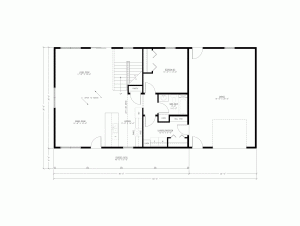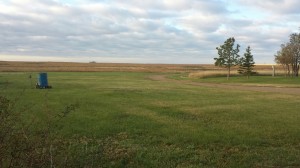I once heard an anecdotal story about a man who had a choice to stand in one of two lines – for brains, or trains. He had always wanted to be an engineer, so he picked the line for trains….
OK, so it wasn’t necessarily funny.
If you’ve ever been involved with a commercial building, it was probably designed by a Registered Design Professional (an RDP – an architect or engineer). Ordered prefabricated wood roof trusses? Again, they were probably manufactured from designs created by a registered professional engineer (P.E.) or a structural engineer (S.E.).
In reality, virtually any structure was either designed by an RDP, or should have been.
Most architects subcontract the structural portion of their designs to an engineer. Engineers specialize in their ability to “run the numbers” to prove on paper why things will or will not perform in the real world.
 An engineer is responsible for the analysis and design of the structure or framing system of a building or building component. While doing the building’s structural design, the engineer will take safety and performance into consideration. For performance or serviceability this is the design for vibrations from machinery, floor vibration or deflection which could cause discomfort, or even building deflection or sway. The occupants of a building might feel uncomfortable if the building sways or moves too much, especially on the upper stories.
An engineer is responsible for the analysis and design of the structure or framing system of a building or building component. While doing the building’s structural design, the engineer will take safety and performance into consideration. For performance or serviceability this is the design for vibrations from machinery, floor vibration or deflection which could cause discomfort, or even building deflection or sway. The occupants of a building might feel uncomfortable if the building sways or moves too much, especially on the upper stories.
An engineer’s qualifications can be verified. The easiest thing to do is to check if the engineer has either a Professional Engineer (PE) license in civil engineering or their Structural Engineer (SE) license in the state which the project is being built. Some states don’t offer a SE license so this is why there is a difference in the title. While there is a nationally recognized test for engineers, there is no general licensing, it is state specific and each state has their own requirements to obtain and maintain registration.
Okay, so this is a general definition of the responsibilities of an engineer, how does it pertain to post frame buildings? Pole buildings, for engineers, involve the same responsibilities and analysis as any other structure, but it all pertains to one specific material. Very few RDPs are familiar with post frame construction and design pole buildings on a regular basis. If hiring an engineer to design a pole barn, look for one with extensive experience – hundreds of post frame buildings designed, not just five or ten.
Be wary of anyone (builder or company) who says “I’ve done pole buildings for 10 years,” but has no engineering background nor degree. Does this mean he can verify the design he uses will be safe? Is it economical in design or did he just put a lot of lumber into it, many dollars of it which does nothing for the building and a lot for depleting your funds? Does it have verifiable calculations to prove it will stand the test of time and nature? Or does it mean buildings have been built over ten years and fortunately none of them have fallen down – yet? Companies which supply complete pole building kit packages have ongoing relationships or employ engineers who have the expertise it takes to design safe and economical structures, which will perform admirably for generations. Don’t be caught “un-insured”. Make sure your building has an engineer’s stamp of approval on your building plans.










Yes but…. The devil is in the details. I have a block building built in 1958 with the trusses rotted out because the soffits were not vented (they didn’t do it that way back then.) The engineer aproved an insuficent nail for the Al roof and a second engineer aproved and even less effective screw repair. Homosote was a majical product back then now we know what crap it is. We have come a long way but there are still things that engineers can get wrong today just as they did 50 years ago. DDT PCB Asbestos were products from some very smart people. I respect the work they have put in but I have seen too many rusted and failed nails in things that should last more than a life time. We don’t know some of the things we don’t know. Time has a way of besting even the “best”.
Vince ~ Just like any other field, engineers are limited by “best current knowledge”. Doctors used to use “blood letting” and astronomers were sure the earth was the center of the universe. I’d still rather trust my belongings to be protected in a building designed by a registered design professional, than one designed by an armchair “engineer”. While every component may not be perfect forever, it will greatly reduce the probability of issues or failures at a later date.